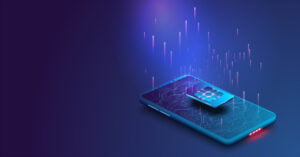In the vast universe of telecommunications, the ICCID number stands tall as a beacon, ensuring seamless connectivity and device identification. But before we dive deep, let’s take a moment to appreciate its historical roots. The ICCID number has evolved over the years, adapting to the ever-changing telecom landscape, and has become an integral part of our connected world.
Decoding the ICCID Number
So, what is this ICCID number we keep talking about? The ICCID (Integrated Circuit Card Identifier) is a unique identifier for SIM cards. Think of it as a passport for your SIM, allowing it to travel across networks. This number is typically between 18 to 22 digits long. If you’re curious, you can find it on the back of your SIM card. But if you’ve already popped it into your phone, don’t worry! It’s usually available in the device’s settings.
- Standardization: Behind the scenes, there are bodies and organizations that ensure every ICCID is unique. They set the rules and maintain the ICCID format, ensuring no two SIM cards have the same number.
Why ICCID Numbers are Pivotal for IoT Devices
Now, let’s talk about the future – the Internet of Things (IoT). In this connected era, everything from your fridge to your car might have a SIM card. And guess what? They all have an ICCID number!
- Network Access Control: The ICCID decides which cellular networks an IoT device can connect to. It’s like a VIP pass, granting access to specific networks.
- Enhanced Security: The ICCID isn’t just about identification. It plays a crucial role in the handshake between the device and the network, ensuring secure communication.
- Theft and Loss Protection: If your IoT device goes missing, the ICCID is the beacon that helps network operators track it down.
The Structure: Breaking Down the ICCID Number
At first glance, the ICCID might seem like a jumble of numbers. But there’s a method to the madness:
- Telecom Identifier: All ICCID numbers start with ’89’, the universal code for telecom.
- Country Code: Next, a code represents the country, as set by the International Telephony Union (ITU).
- Network Signature: This part tells us about the SIM’s home network.
- Unique SIM Identification: The final segment is unique to each SIM, making it stand out from the crowd.
ICCID, IMSI, and IMEI: Clearing the Confusion
I get it; these acronyms can be confusing. But let’s break it down:
- ICCID: The unique identifier for SIM cards, which we’ve been discussing.
- IMSI: Another identifier, but this one’s only 15 digits long and is used mainly by network operators.
- IMEI: This number identifies mobile devices and modems. It’s like the ICCID but for devices.
The eSIM Evolution: How ICCID Numbers are Adapting
The world of SIM cards is changing. Enter the eSIM, or embedded SIM. Unlike traditional SIMs that you can remove, eSIMs are built into devices. But they still have ICCID numbers, allowing them to switch between networks with ease.
Security Implications of ICCID Numbers
In the digital age, security is paramount. The ICCID number is no exception:
- Potential Vulnerabilities: Like all digital entities, ICCIDs can be vulnerable. But measures are in place to protect them.
- Safeguard Measures: From encryption to regular updates, various steps ensure the ICCID’s security.
Global Usage and Variations of ICCID Numbers
ICCID numbers are used worldwide. But there are subtle variations:
- Regional Differences: Different regions might have unique practices for ICCID allocation.
- Management Practices: How ICCID numbers are managed can vary from one country to another.
Future of ICCID Numbers
As we look to the horizon, the ICCID number’s role is set to evolve. With emerging technologies and a rapidly changing telecom landscape, who knows what the future holds?
Conclusion
We’ve journeyed through the world of ICCID numbers, understanding their significance in telecommunications. These numbers, though often overlooked, are the backbone of our connected world. So, the next time you make a call or send a text, remember the humble ICCID, working silently in the background. Stay curious, and keep exploring the wonders of telecommunications!







